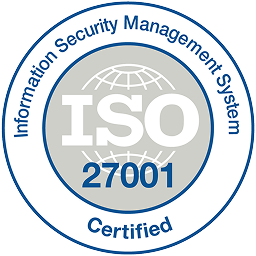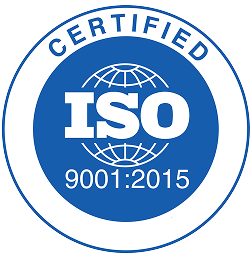Forecasting and Demand Planning Automation: A Lifeline for Supply Chain Optimization
In the dynamic and ever-evolving supply chain landscape, forecasting and demand planning play a pivotal role in ensuring operational efficiency and customer satisfaction. However, these processes are often fraught with challenges, including vast amounts of data to analyze, fluctuating market trends, and the need for real-time adjustments.
Enter the Power of Automation: Python, AI, and the Cloud
To address these challenges and unlock the full potential of forecasting and demand planning, Python, AI, and cloud-based solutions offer a powerful combination. By leveraging the capabilities of these technologies, businesses can transform their supply chain operations, achieving greater accuracy, efficiency, and agility.

Python, AI, and the Cloud: A Trinity for Forecasting and Demand Planning Automation
Unleashing the Power of Unattended Bots with Python
Python’s versatility and extensive library ecosystem make it an ideal choice for developing unattended bots that can automate the entire forecasting and demand planning process. These bots can be programmed to:
- Extract and analyze historical sales data from various sources, including ERP systems, spreadsheets, and databases.
- Monitor market trends using web scraping and data mining techniques, capturing real-time insights into customer behavior and industry dynamics.
- Generate accurate demand forecasts using statistical models and machine learning algorithms, predicting future demand based on historical patterns and market trends.
- Create optimized demand plans and inventory replenishment schedules that balance customer service levels with inventory carrying costs, ensuring optimal inventory management.
- Continuously monitor and adjust demand plans in response to changing market conditions or business priorities, maintaining agility and responsiveness in the face of uncertainty.
Enhancing Automation with Attended Bots and Cloud Platforms
Attended bots, powered by Python’s intuitive interface and extensive customization options, empower human users to collaborate with bots seamlessly. This hybrid approach enables users to:
- Fine-tune demand forecasts by incorporating their domain expertise and real-time observations, improving the accuracy and reliability of demand plans.
- Handle exceptions and edge cases that may not be covered by automated rules, ensuring that the automation process remains robust and adaptable.
- Access real-time data and insights from cloud platforms, enabling informed decision-making and proactive planning.
Cloud platforms offer a comprehensive suite of automation orchestration capabilities that far surpass the limitations of traditional RPA/workflow tools. These platforms provide:
- Scalability and elasticity: Seamlessly scale automation processes to meet changing demand, ensuring uninterrupted operations.
- Centralized management and monitoring: Manage and monitor all automation activities from a single dashboard, providing visibility and control.
- Integration with other cloud services: Leverage pre-built integrations with other cloud services, such as data analytics, machine learning, and visualization tools, to enhance the capabilities of forecasting and demand planning automations.
AI: The Catalyst for Accuracy and Edge-Case Handling
AI techniques, such as image recognition, natural language processing (NLP), and generative AI, can significantly enhance the accuracy and robustness of forecasting and demand planning automations. These techniques can be employed to:
- Extract insights from unstructured data: Analyze images, videos, and text documents to capture valuable information that may not be easily accessible through traditional data sources.
- Understand customer sentiment and preferences: Analyze customer reviews, social media posts, and other unstructured data to gauge customer sentiment and identify emerging trends.
- Handle complex and uncertain situations: Leverage generative AI to simulate different scenarios and generate probabilistic forecasts, providing a more comprehensive understanding of potential outcomes and risks.
By integrating Python, AI, and cloud platforms into their forecasting and demand planning processes, businesses can unlock unprecedented levels of efficiency, accuracy, and agility. These technologies empower organizations to optimize their supply chains, reduce costs, increase customer satisfaction, and gain a competitive edge in the ever-evolving business landscape.

Building the Automation: A Step-by-Step Guide
Sub-Processes of Forecasting and Demand Planning Automation
The forecasting and demand planning automation process can be broken down into several key sub-processes:
- Data Collection and Preparation: Gather historical sales data, market trend data, and other relevant information from various sources and prepare it for analysis.
- Demand Forecasting: Use statistical models and machine learning algorithms to forecast future demand based on historical patterns and market trends.
- Demand Planning: Create optimized demand plans that balance customer service levels with inventory carrying costs, taking into account forecasted demand and other business constraints.
- Inventory Replenishment Scheduling: Generate inventory replenishment schedules based on demand plans, ensuring that inventory levels are maintained at optimal levels.
- Monitoring and Adjustment: Continuously monitor actual demand and market conditions, and adjust demand plans and inventory replenishment schedules as needed to maintain alignment with changing circumstances.
Automating Sub-Processes with Python and Cloud
Step 1: Data Collection and Preparation
- Use Python libraries to extract data from various sources, such as ERP systems, spreadsheets, and databases.
- Leverage cloud storage services to store and manage large volumes of data securely.
Step 2: Demand Forecasting
- Utilize Python’s machine learning libraries to develop and train forecasting models.
- Deploy these models on cloud platforms to enable scalable and efficient forecasting.
Step 3: Demand Planning
- Develop Python scripts to optimize demand plans based on forecasted demand and business constraints.
- Integrate these scripts with cloud platforms for centralized management and monitoring.
Step 4: Inventory Replenishment Scheduling
- Use Python to generate inventory replenishment schedules based on demand plans.
- Integrate with cloud-based inventory management systems to automate the replenishment process.
Step 5: Monitoring and Adjustment
- Utilize Python to monitor actual demand and market conditions.
- Develop automated workflows on cloud platforms to trigger adjustments to demand plans and inventory replenishment schedules as needed.
Data Security and Compliance
Data security and compliance are paramount in supply chain operations. Python and cloud platforms offer robust security features to ensure the protection of sensitive data. Encryption, access controls, and audit trails help organizations meet regulatory requirements and maintain the integrity of their data.
Advantages of Python over No-Code RPA/Workflow Tools
- Flexibility and Customization: Python provides unparalleled flexibility and customization options, allowing businesses to tailor their automations to their specific needs and processes.
- Scalability and Performance: Python’s powerful computing capabilities and scalability make it suitable for handling large volumes of data and complex forecasting models.
- Integration with Cloud Platforms: Python seamlessly integrates with cloud platforms, enabling businesses to leverage the full suite of cloud services for automation orchestration and data management.
Algorythum’s Approach: Why Python?
Algorythum takes a Python-based approach to forecasting and demand planning automation because we understand the limitations of off-the-shelf RPA/workflow tools. These tools often lack the flexibility, scalability, and customization options required to meet the unique challenges of supply chain operations. By leveraging Python and cloud platforms, Algorythum empowers businesses to build robust, tailored automations that deliver tangible results and drive supply chain optimization.

The Future of Forecasting and Demand Planning Automation
The convergence of Python, AI, and cloud platforms has opened up a world of possibilities for forecasting and demand planning automation. As these technologies continue to evolve, we can expect to see even more innovative and powerful solutions emerge.
Extended Implementation Possibilities
- Real-Time Demand Sensing: Leverage IoT sensors and streaming data platforms to capture real-time demand signals, enabling businesses to respond to changes in demand almost instantaneously.
- Prescriptive Analytics: Utilize AI techniques to generate prescriptive recommendations for demand planning and inventory optimization, helping businesses make data-driven decisions and improve outcomes.
- Digital Twins: Create digital twins of supply chains to simulate different scenarios and optimize decision-making, reducing risk and increasing agility.
Subscribe to our newsletter to stay updated on the latest trends and advancements in forecasting and demand planning automation.
Contact our team today for a free feasibility assessment and cost estimate for your custom automation requirements. Let us help you unlock the full potential of Python, AI, and cloud-based solutions to optimize your supply chain and drive business growth.

Algorythum – Your Partner in Automations and Beyond
At Algorythum, we specialize in crafting custom RPA solutions with Python, specifically tailored to your industry. We break free from the limitations of off-the-shelf tools, offering:
- A team of Automation & DevSecOps Experts: Deeply experienced in building scalable and efficient automation solutions for various businesses in all industries.
- Reduced Automation Maintenance Costs: Our code is clear, maintainable, and minimizes future upkeep expenses (up to 90% reduction compared to platforms).
- Future-Proof Solutions: You own the code, ensuring flexibility and adaptability as your processes and regulations evolve.









